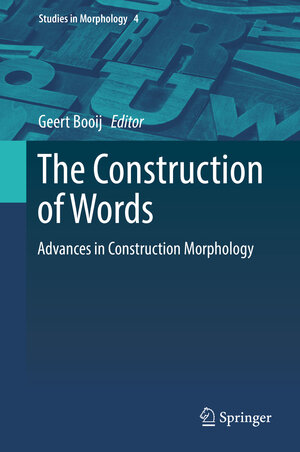
×
![Buchcover ISBN 9783319743936]()
“This book is a valuable resource as it provides new approaches and answers to issues involving word structure in general as well as morphological phenomena in specific languages. … the volume is a unified piece of work in terms of content and formatting. All the articles in the book are formatted in a consistent way. The cited works are all included in the references.” (Saizhu Hu, The Linguist List, linguistlist. org, November, 2018)
This volume focuses on detailed studies of various aspects of Construction Morphology, and combines theoretical analysis and descriptive detail. It deals with data from several domains of linguistics and contributes to an integration of findings from various subdisciplines of linguistics into a common model of the architecture of language. It presents applications and extensions of the model of Construction Morphology to a wide range of languages.
Construction Morphology is one of the theoretical paradigms in present-day morphology. It makes use of concepts of Construction Grammar for the analysis of word formation and inflection. Complex words are seen as constructions, that is, pairs of form and meaning. Morphological patterns are accounted for by construction schemas. These are the recipes for coining new words and word forms, and they motivate the properties of existing complex words. Both schemas and individual words are stored, and hence there is no strict separation of lexicon and grammar. In addition to abstract schemas there are subschemas for subclasses of complex words with specific properties. This architecture of the grammar is in harmony with findings from other empirical domains of linguistics such as language acquisition, word processing, and language change.



